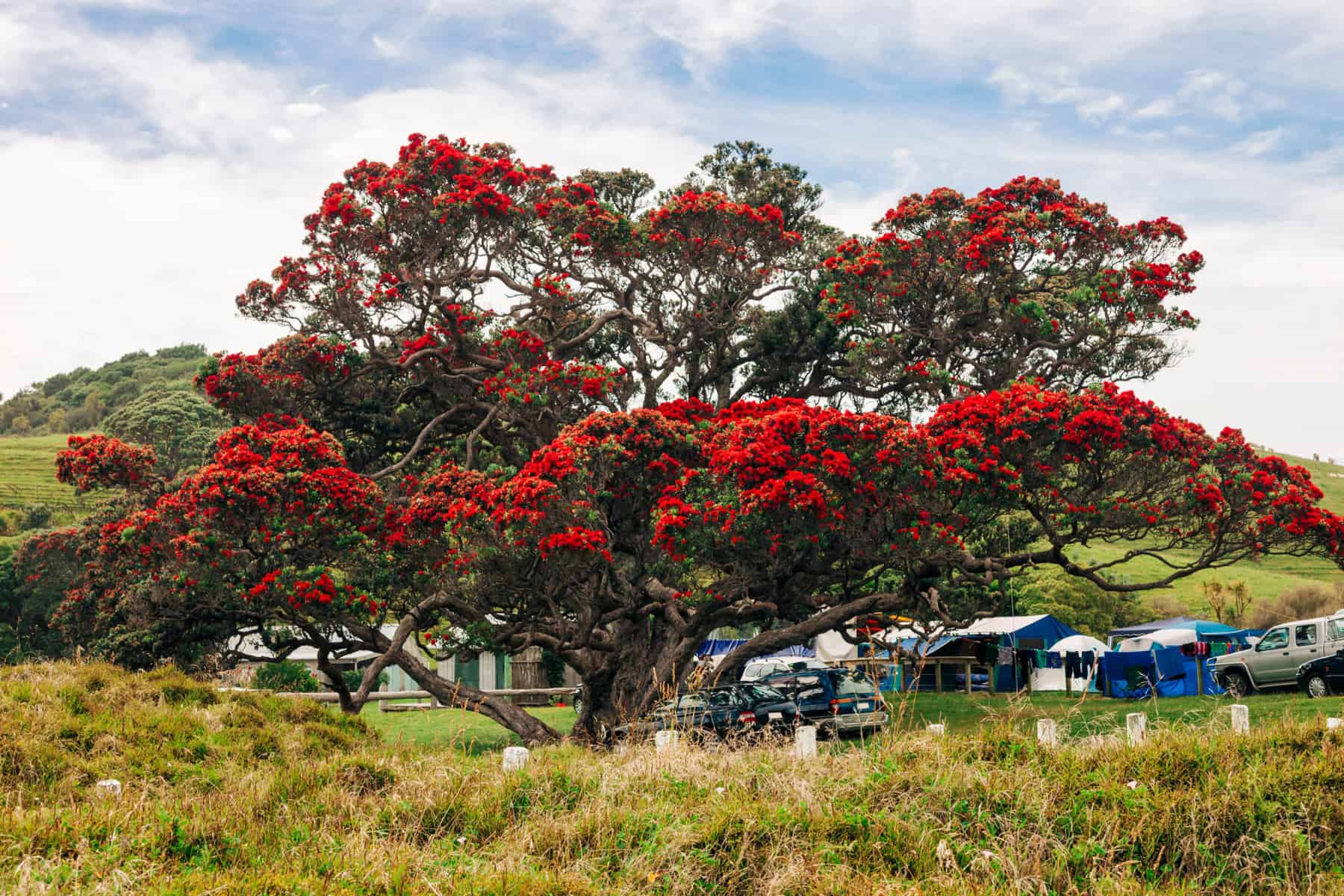Threats such as kauri dieback and myrtle rust are placing new pressures on tree populations, but the background pressures haven’t gone away. Pōhutukawa (Metrosideros excelsa), which is threatened by myrtle rust, provides a good example.
“If you were trying to restore populations of pōhutukawa in the long term, then of course safeguarding it against a new disease would be something you’d want to do” says Peter. “But, you’d also need to be thinking that trees won’t live forever, and when pōhutukawa typically colonises an area it colonises bare ground – it doesn’t regenerate under itself and it won’t. If you are looking at how you would manage a landscape in the long term to protect that species, you need to take a whole landscape perspective.”
The team behind the Conservation & Restoration theme aims to safeguard the taonga rākau (trees) that are impacted by myrtle rust and kauri dieback and protect the natural ranges of these species. At this stage, the team are working with mana whenua to determine the best way to proceed moving forward, with initial hui (meetings) currently underway.
The main piece of work Peter is involved with is working with iwi and hapū to develop a resilient landscape that would allow us to restore these taonga. Alby Marsh, Peter’s fellow co-lead, brings a te ao Māori perspective. “If the species are vulnerable in your rohe, you might adopt a process of sending your vulnerable taonga to another place. The analogy he draws is the concept of whāngai – sending your tamariki to grow up safely somewhere else.”
One of the main research aims for the theme is tikanga-driven conservation of taonga. This work has been led and implemented by Ngāti Kuri, whose rohe is the northernmost in Aotearoa. The first native plant to be infected by myrtle rust was pōhutukawa, on Rangitāhua (Kermadec Islands), part of their rohe. Ngāti Kurī are driving the conservation of these taonga, including Te Rata Moehau, a special taonga to the mainland of Te Hiku o Te Ika, highly endangered and at risk. Through hosting wānanga, hui, stakeholder specialist hui, and practical land-based assessments, Ngāti Kuri are creating new management frameworks and protection models to be implemented by their whānau and other interested community members to protect and restore natural habitats and taonga stock.
Another aspect of this mahi is researching the genetic variation of kauri – not looking at the whole genome, but looking at the degree of variability focusing on particular genetic markers within kauri populations. This research is being done at various life stages from seedlings to adults, as selection pressures vary through the life of the tree. There is some indication that there is variability of the expression of the disease between kauri, which could be based on genetic differences.
The potential of seed storage for the conservation of these species is also being investigated. While seed storage works in some cases, some species in the myrtle family have fleshy fruit. This makes it incredibly difficult to store these seeds, and it may take novel techniques to have any chance. However, for some species like ramarama (Lophomyrtus bullata) which are severely threatened by myrtle rust, there is a clear imperative to investigate seed storage further as there is a real risk that they could be lost in part if not all of their native range.
A further focus for the team is around social science. Led by Alby, this mahi looks at how mana whenua who work for crown agencies like Te Papa Atawhai (Department of Conservation) can be as effective as they can in protecting taonga.
